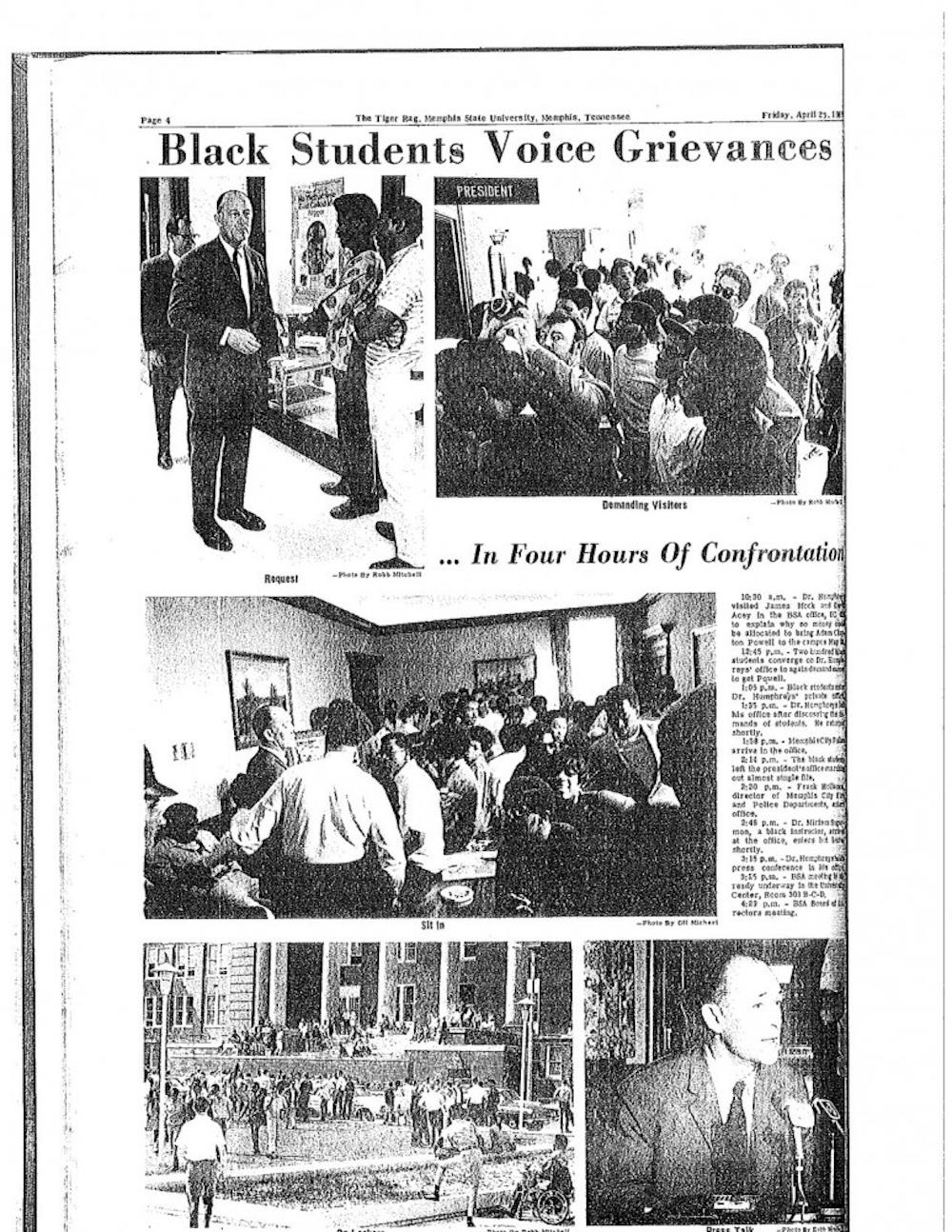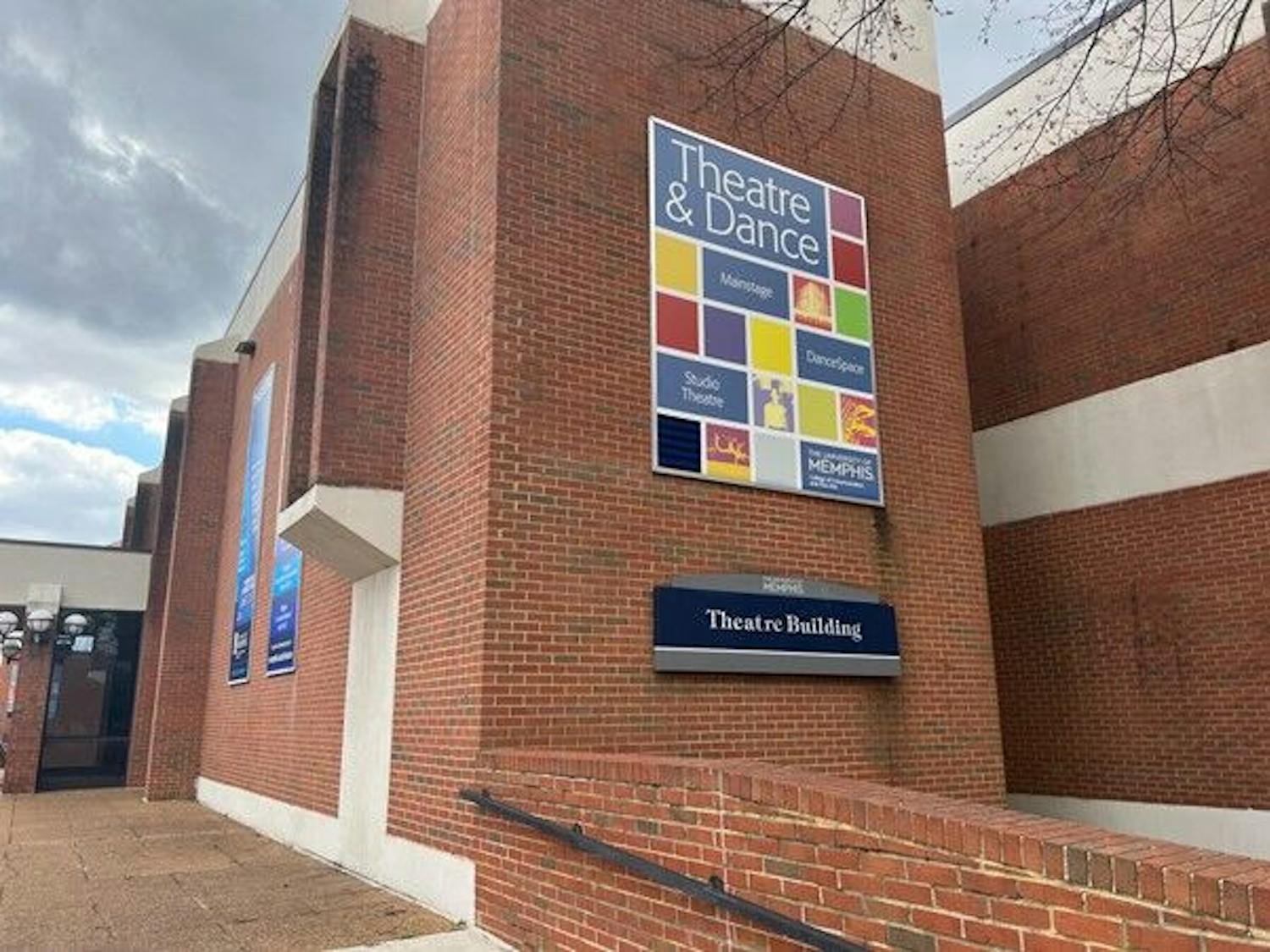During the 1960s, Memphis State University was fully integrated but still did not allow black students to experience the fun aspects of college.
Black students were banned from homecoming, being involved in Greek life or playing on the basketball team. The Black Student Association realized only the African-American student body was capable of bringing change, so they decided to make it happen.
On April 23, 1969, David Acey, the leader of the BSA, recruited 75 students and hosted a sit-in at Cecil C. Humphreys' office, the university president at that time.
James Mock and Ester L. Hurt, BSA executive board members, asked Humphreys to withdraw $1,750 from the speaker funds to finance a speech by Adam Clayton Powell. Powell, a Harlem native, was a civil rights activist and the first black man from New York to be elected to the position United States House of Representatives,.
Humphreys refused and claimed there was not any money to give them. The members also demanded a black dean, more black professors and black teachers to teach courses about African-American history, but Humphreys left their requests unanswered.
“Some of us came over here for an answer,” Mock said to The Tiger Rag in the April 25, 1969, issue of the paper. “We’re going to stay here until we get an answer. We can’t be isolated any longer. Dammit, we’re here.”
Humphreys asked the students to leave, but they refused, and the Memphis City Police were called. Although the students left when the police arrived, it motivated them to plan another strategy.
The sit-in was supported by the National Association for the Advancement of Colored People (NAACP) and the Community on the Move for Equality (COME). The support from these two groups encouraged the organization to host more meetings and occupy Humphrey’s office again.
Many of the students who agreed to protest were aware they would possibly go to jail, get shot or be banned from graduation, but they were willing to take the risk.
On April 28, 1969, 109 students again occupied Humphreys office, who was not there at the time. The police arrived, and this time the students refused to leave.
The students were then arrested, taken to jail and charged with trespassing. The NAACP provided legal and monetary support for the students, and the charges were eventually dropped.
The students’ actions enabled African-Americans to become integrated in Greek life and fully involved in campus life. The university also hired more black faculty members, and more African-Americans enrolled at the university.
Maybelline Forbes was crowned the first black homecoming queen in 1970, and more African-Americans were represented in the ‘Campus Cutie’ section of The Tiger Rag, the predecessor of The Daily Helmsman.
Each of these improvements was historic because more blacks were being represented on campus, and it made African-American students feel welcomed, which was what the former students fought to have.
Aram Goudsouzian, a history professor at the U of M, said the protest caused others to realize there was a problem that needed to be fixed.
“Though many whites disapproved of the protest, it did compel the hiring of more faculty and administrators, and it reminded the university administration that if it treated African-Americans like second-class participants in campus life, then those students would make their voices heard,” Goudsouzian said.
BSA remains to be an organization at the U of M, and its purpose is to help in the development of black students on educational, political, social and economic levels, support black students and serve as a foundation to the growth of black students.
Railyn Lamb, the current BSA president, said the actions of these BSA members serve as an example for current black students to do the same.
“Their actions have given us a voice,” Lamb said. “African-American students can see we are the change we want to be, and it’s on us to make calls for action and changes on our campus.”
Lamb also said these former students and BSA members have motivated her to carry on the traditions they created and continue to better the campus experience for future black students at the U of M.
The Tiger Rag, the predecessor to The Daily Helmsman, covered the Black Student Association's sit-in at then-President Cecil C. Humphreys' office on April 24, 1969, with photos. The students demanded funding to bring Adam Clayton Powell to the university to speak.
The Tiger Rag published two stories about the Black Student Association's sit-in at Cecil C. Humphreys' office. About 200 students stayed in the office demanding funding of $1,750 to bring speaker Adam Clayton Powell to campus.






